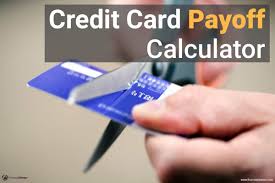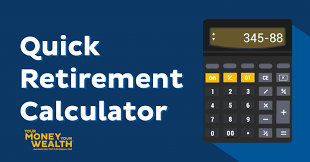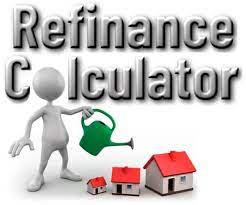Welcome to the ultimate guide for mastering your finances with the Credit Cards Calculator (Credit Cards Payment Calculator) .This powerful tool will help you take control of your credit card debt, plan your payments effectively, and achieve a debt-free future faster. Dive in to discover how this essential calculator can revolutionize your financial journey!
Our Credit Cards Payoff Calculator can help you determine your monthly payments and payback plan for a certain amount of credit card debt.
Credit Card Calculator
Purpose 1: Payback a Certain Amount
Purpose 2: Determine Monthly Payments
Why Have More Than One Credit Card?
Credit cards have become a ubiquitous tool for many people in managing their finances. With numerous options available, it can be tempting to stick with just one credit card. However, there are several reasons why having multiple credit cards may be beneficial. In this article, we’ll explore some of the advantages of having more than one credit card, as well as some important considerations to keep in mind.
Build credit: One of the key benefits of having more than one credit card is the potential to build your credit score. By using multiple credit cards responsibly, you can demonstrate to lenders that you can manage your credit well, which can help improve your credit score over time.
Flexibility and rewards: Another advantage of having multiple credit cards is the added flexibility and potential for rewards. Depending on the types of credit cards you have, you may be able to earn rewards like cash back, points, or miles for certain types of purchases. Having multiple credit cards can also give you more options for accessing credit in a pinch.
Backup and security: Having more than one credit card can also provide an important backup and security measure. If one credit card is lost, stolen, or compromised, you can rely on your other cards to continue making purchases while you work to resolve the issue.
Considerations and potential drawbacks: While there are many benefits to having multiple credit cards, it’s important to consider some potential drawbacks as well. These may include the temptation to overspend, the potential for higher fees and interest rates, and the need to manage multiple accounts and payment due dates.
Overall, having more than one credit card can offer many advantages, from building credit to earning rewards to providing backup and security. However, it’s important to consider the potential drawbacks and manage your credit use responsibly. By understanding the benefits and considerations of having multiple credit cards, you can make an informed decision about what works best for your financial situation.
Drawbacks of Multiple Credit Cards
While there are many potential benefits to having multiple credit cards, it’s important to consider the potential drawbacks as well. In this article, we’ll explore some of the potential downsides of having multiple credit cards, including higher fees and interest rates, the temptation to overspend, and the need to manage multiple accounts and payment due dates.
Higher fees and interest rates: One of the most significant drawbacks of having multiple credit cards is the potential for higher fees and interest rates. If you’re not careful, you may end up paying more in annual fees, balance transfer fees, and other charges, especially if you carry a balance on multiple cards.
Temptation to overspend: Another potential downside of having multiple credit cards is the temptation to overspend. With multiple credit lines available, it can be easy to spend more than you can afford, especially if you’re not keeping a close eye on your balances and payment due dates.
Difficulty managing multiple accounts: Having multiple credit cards can also make it more difficult to manage your finances. You may need to keep track of multiple payment due dates, minimum payments, and interest rates, which can be challenging to juggle, especially if you have other financial obligations to manage.
Impact on credit score: Finally, having multiple credit cards can potentially impact your credit score. If you open too many new credit accounts too quickly, you may be seen as a higher risk borrower, which can negatively impact your credit score.
While having multiple credit cards can offer some benefits, such as increased flexibility and rewards, it’s important to carefully consider the potential drawbacks as well. Before opening multiple credit cards, make sure you understand the fees and interest rates involved, and create a budget to avoid overspending. Additionally, be prepared to manage multiple accounts and payment due dates, and be aware of how opening multiple accounts may impact your credit score.
Tips for Managing Multiple Credit Cards
Managing multiple credit cards can be challenging, but with the right strategies in place, you can stay on top of your payments, avoid overspending, and even take advantage of rewards and benefits. In this article, we’ll share some tips for managing multiple credit cards effectively, including staying organized, setting a budget, and using technology to your advantage.
Stay organized: One of the keys to managing multiple credit cards is staying organized. Keep track of your payment due dates, minimum payments, and interest rates in a spreadsheet or financial management tool. Set up alerts or reminders to make sure you never miss a payment or exceed your credit limit.
Set a budget: Another important tip for managing multiple credit cards is to set a budget. Determine how much you can afford to spend each month, and allocate that amount across your different cards based on their interest rates and rewards programs. Make sure you’re always paying off your balance in full, and avoid carrying a balance on multiple cards.
Take advantage of rewards and benefits: One of the benefits of having multiple credit cards is the potential to earn rewards and take advantage of other benefits, such as cash back, travel rewards, or balance transfer offers. However, make sure you understand the terms and conditions of each card’s rewards program, and use them strategically to maximize your benefits.
Use technology to your advantage: Finally, consider using technology to help you manage your multiple credit cards. Many banks and credit card companies offer mobile apps or online tools that allow you to view your account balances, track your spending, and make payments on-the-go. You can also use budgeting apps or financial management tools to track your overall finances and stay on top of your credit card payments.
Managing multiple credit cards doesn’t have to be overwhelming. By staying organized, setting a budget, taking advantage of rewards and benefits, and using technology to your advantage, you can effectively manage your credit cards and avoid common pitfalls like overspending or missing payments. Remember to always pay off your balances in full and avoid carrying a balance on multiple cards to ensure that you’re not accruing unnecessary interest charges.
Dealing with High Interest Rates
High interest rates on credit cards can make it difficult to pay off debt and can leave you feeling trapped in a cycle of minimum payments and accruing interest. But with the right strategies in place, you can take control of your finances and pay off your credit card debts for good. In this article, we’ll share some tips for dealing with high interest rates on credit cards, including prioritizing your payments, negotiating with your creditors, and consolidating your debt.
Prioritize your payments: One of the most effective ways to deal with high interest rates is to prioritize your payments. Focus on paying off your credit cards with the highest interest rates first, while making minimum payments on your other cards. This will help you reduce the amount of interest you’re accruing and pay off your debt more quickly.
Negotiate with your creditors: Another option for dealing with high interest rates is to negotiate with your creditors. Reach out to your credit card companies and ask if they’re willing to lower your interest rates. You can also explore balance transfer offers or other promotions that may allow you to transfer your debt to a card with a lower interest rate.
Consider consolidating your debt: Consolidating your credit card debt can also be an effective way to deal with high interest rates. You can consolidate your debt by taking out a personal loan, using a home equity line of credit, or transferring your balances to a single credit card with a lower interest rate. Be sure to compare your options and choose the one that makes the most sense for your financial situation.
Make a budget and stick to it: Finally, it’s important to create a budget and stick to it when dealing with high interest rates. Determine how much you can afford to pay towards your credit card debt each month, and allocate your payments accordingly. Cut back on unnecessary expenses and prioritize paying off your debt to avoid accruing more interest charges.
How long to pay off a credit card?
we’ll explore some tips and strategies for paying off credit card debt and provide an estimate of how long it might take to pay off a credit card.
Calculate your credit card debt: The first step in figuring out how long it will take to pay off your credit card is to calculate how much you owe. Write down the balance on each of your credit cards, as well as the interest rate and minimum payment for each card. This will give you a clear picture of how much debt you’re dealing with.
Make a plan: Once you have a clear idea of how much you owe, it’s time to make a plan for paying off your debt. Start by making a budget and allocating a portion of your income towards paying off your credit cards. Determine how much you can afford to pay each month and consider strategies like the debt snowball or debt avalanche methods to prioritize paying off your highest interest debt first.
Consider balance transfers: Balance transfers can be a useful tool for paying off credit card debt more quickly. If you have a high interest rate on your credit card, consider transferring your balance to a card with a lower interest rate. Be sure to read the fine print and understand any fees or terms associated with the balance transfer.
Track your progress: Once you have a plan in place, it’s important to track your progress towards paying off your credit card debt. Keep a record of your payments and update your budget regularly. Celebrate small victories along the way to stay motivated and on track.
Estimate how long it will take: Depending on how much debt you have and how much you can afford to pay each month, it may take several months or even years to pay off your credit card debt. Use a credit card payoff calculator to estimate how long it will take to pay off your debt based on your current payments.
Conclusion: Paying off credit card debt can be a daunting task, but with the right strategies in place, it’s possible to achieve financial freedom and security. Calculate your credit card debt, make a plan, consider balance transfers, track your progress, and estimate how long it will take to pay off your debt. Remember, paying off your debt will take time and effort, but it’s worth it in the end to achieve financial stability and peace of mind.
Determining the monthly credit card payment
Credit cards can be a useful tool for managing expenses and building credit, but they can also lead to debt if not managed properly. One of the most important aspects of credit card management is determining the monthly payment required to pay off your balance. In this article, we’ll explore the factors that determine your monthly credit card payment and provide tips for managing your credit card debt.
Understanding your credit card statement: The first step in determining your monthly credit card payment is understanding your credit card statement. Your statement will provide information on your balance, interest rate, minimum payment, and due date. Take the time to review your statement carefully to ensure you understand the terms and conditions of your credit card agreement.
Calculating your minimum payment: Your credit card statement will include a minimum payment amount, which is the smallest amount you are required to pay each month. This amount is typically a percentage of your balance, usually around 2-3%, plus any interest and fees. While paying the minimum payment is better than not paying at all, it’s important to pay more than the minimum to avoid accruing interest and paying off your balance more quickly.
Estimating your monthly payment: To estimate your monthly payment, you can use a credit card payment calculator. This calculator will take into account your balance, interest rate, and payment term to provide an estimate of how much you should pay each month to pay off your balance. Alternatively, you can calculate your monthly payment manually by dividing your balance by the number of months in your payment term and adding interest and fees.
Tips for managing your credit card debt: Once you have an understanding of your monthly credit card payment, it’s important to manage your debt effectively. Consider strategies like making more than the minimum payment each month, setting up automatic payments to ensure you don’t miss a payment, and using balance transfers to consolidate high-interest debt onto a card with a lower interest rate. You can also seek the help of a credit counselor if you need assistance managing your debt
The Debt Avalanche or Snowball Method?
When it comes to paying off debt, there are two popular methods that people often use: the debt avalanche and the debt snowball. While both methods aim to eliminate debt, they differ in the order in which debts are paid off. In this article, we’ll explore the differences between these two methods and help you decide which one is right for you.
The Debt Avalanche Method The debt avalanche method involves paying off debts in order of interest rate, starting with the highest interest rate debt first. By paying off the debt with the highest interest rate first, you’ll save money in the long run by reducing the amount of interest you’ll pay over time. We’ll discuss the pros and cons of this method, as well as provide an example of how it works.
The Debt Snowball Method The debt snowball method, on the other hand, involves paying off debts in order of balance, starting with the smallest balance first. By paying off smaller debts first, you’ll gain momentum and motivation as you see your debts disappear one by one. We’ll go over the benefits and drawbacks of this method, as well as provide an example of how it works.
Which Method is Right for You? In this section, we’ll help you determine which debt repayment method is best for your situation. We’ll explore factors such as the amount of debt you have, your interest rates, and your personal motivation and mindset. We’ll also provide some tips on how to make the most of your chosen method, such as setting realistic goals and tracking your progress.
Conclusion: No matter which debt repayment method you choose, the most important thing is to take action and start working towards becoming debt-free. Whether you choose the debt avalanche or snowball method, using a debt repayment calculator can help you create a plan and stay on track. By making a commitment to pay off your debt, you’ll be taking an important step towards achieving financial freedom.
Credit Cards Calculator
Credit cards are powerful financial tools that offer convenience, flexibility, and rewards. However, they can also lead to debt if not managed wisely. This is where a Credit Cards Calculator comes into play, offering you the ability to make informed financial decisions, plan your payments, and pay off your balances efficiently.
What is a Credit Cards Calculator?
A Credit Cards Calculator is a financial tool designed to help you understand and manage your credit card debt. It offers various functionalities, but its primary purpose is to assist in calculating payments and managing your credit card balances.
The Two Key Aspects: Payment and Payoff
Credit Cards Payment Calculator:
The Credit Cards Payment Calculator is an essential component of managing your credit card debt. It helps you determine how much you should pay each month to meet your financial goals. By inputting details such as your outstanding balance, annual interest rate, and desired payoff timeline, the calculator reveals your required monthly payment.
This calculator empowers you to:
- Set a specific time frame for paying off your credit card debt.
- Understand how varying payment amounts impact your repayment schedule.
- Plan your budget by ensuring that you can meet your monthly payment obligations.
Credit Cards Payoff Calculator:
The Credit Cards Payoff Calculator is your key to financial freedom. It shows you the path to paying off your credit card debt efficiently. By entering details such as your outstanding balance, annual interest rate, and monthly payment amount, the calculator generates a clear timeline for when you’ll become debt-free.
This calculator allows you to:
- Set achievable goals for eliminating your credit card debt.
- Visualize your progress and stay motivated to become debt-free.
- Make informed decisions about how much to pay each month to meet your desired payoff date.
Why Use a Credit Cards Calculator?
Financial Clarity: Credit Cards Calculators provide clarity on how to manage your credit card debt. They help you understand the relationship between payment amounts, interest rates, and payoff timelines.
Debt Freedom: These calculators empower you to take control of your finances. You can set realistic goals for paying off your credit card debt and track your progress along the way.
Budget Planning: By using a Credit Cards Payment Calculator, you can budget effectively to ensure you make your monthly payments on time and work towards debt elimination.
Free Online Tools: Accessible and Valuable
Many financial institutions and websites offer free Credit Cards Calculators. These user-friendly tools are easily accessible, allowing you to explore different payment scenarios and plan your journey towards becoming debt-free.
Conclusion: Financial Empowerment
A Credit Cards Calculator is your gateway to financial empowerment. Whether you’re looking to manage existing credit card debt, plan future spending, or eliminate balances efficiently, these tools provide the insights and guidance you need. Take charge of your credit card finances, make informed decisions, and set yourself on the path to financial freedom with the assistance of Credit Cards Calculators.

FAQ
What is a Credit Cards Payoff Calculator?
- A Credit Cards Payoff Calculator is a financial tool that helps you determine the timeline for paying off your credit card debt. It calculates how long it will take to eliminate your balance based on your current balance, interest rate, and monthly payment.
How does a Credit Cards Payoff Calculator work?
- To use a Credit Cards Payoff Calculator, you input your outstanding credit card balance, annual interest rate, and either your desired monthly payment or a timeframe for payoff. The calculator then generates a clear schedule, showing when you’ll be debt-free.
Why is understanding credit card payoff important?
- Understanding credit card payoff is crucial to gaining control over your finances. It enables you to set realistic goals for eliminating debt and visualize your path to financial freedom.
What is a Credit Cards Payment Calculator?
- A Credit Cards Payment Calculator helps you determine the minimum or recommended monthly payment to manage your credit card debt effectively. It factors in your outstanding balance, interest rate, and desired payoff timeline.
How does a Credit Cards Payment Calculator work?
- To use a Credit Cards Payment Calculator, you input your credit card balance, annual interest rate, and either your desired payoff timeframe or a specific monthly payment amount. The calculator calculates the required monthly payment to meet your financial goals.
Why is it essential to calculate credit card payments?
- Calculating credit card payments is vital to managing your financial obligations effectively. It ensures you budget for monthly payments and allows you to meet your credit card debt goals.
What is a Credit Cards Calculator, and how does it help?
- A Credit Cards Calculator is a versatile financial tool that combines the functionalities of payment and payoff calculators. It allows you to explore different scenarios by adjusting variables like balance, interest rate, monthly payment, and payoff timeline.
Can I access free Credit Cards Calculators online?
- Yes, many financial institutions and websites offer free Credit Cards Calculators. These accessible tools empower you to manage and plan your credit card debt effectively.
What benefits do Credit Cards Calculators provide?
- Credit Cards Calculators offer financial clarity, allowing you to understand the relationship between payment amounts, interest rates, and payoff timelines. They help you set achievable goals for debt elimination, visualize your progress, and budget effectively.
Can Credit Cards Calculators be used for planning future credit card spending?
- While Credit Cards Calculators are primarily designed for managing existing debt, you can use them to plan future spending by setting financial goals and understanding how credit card payments impact your budget.
Credit Cards Calculator – Credit Cards Payment Calculator – Credit Cards Payoff Calculator
Legal Notices and Disclaimer
All Information contained in and produced by the ModernCalculators.com is provided for educational purposes only. This information should not be used for any Financial planning etc. Take the help from Financial experts for any Finace related Topics. This Website will not be responsible for any Financial loss etc.





